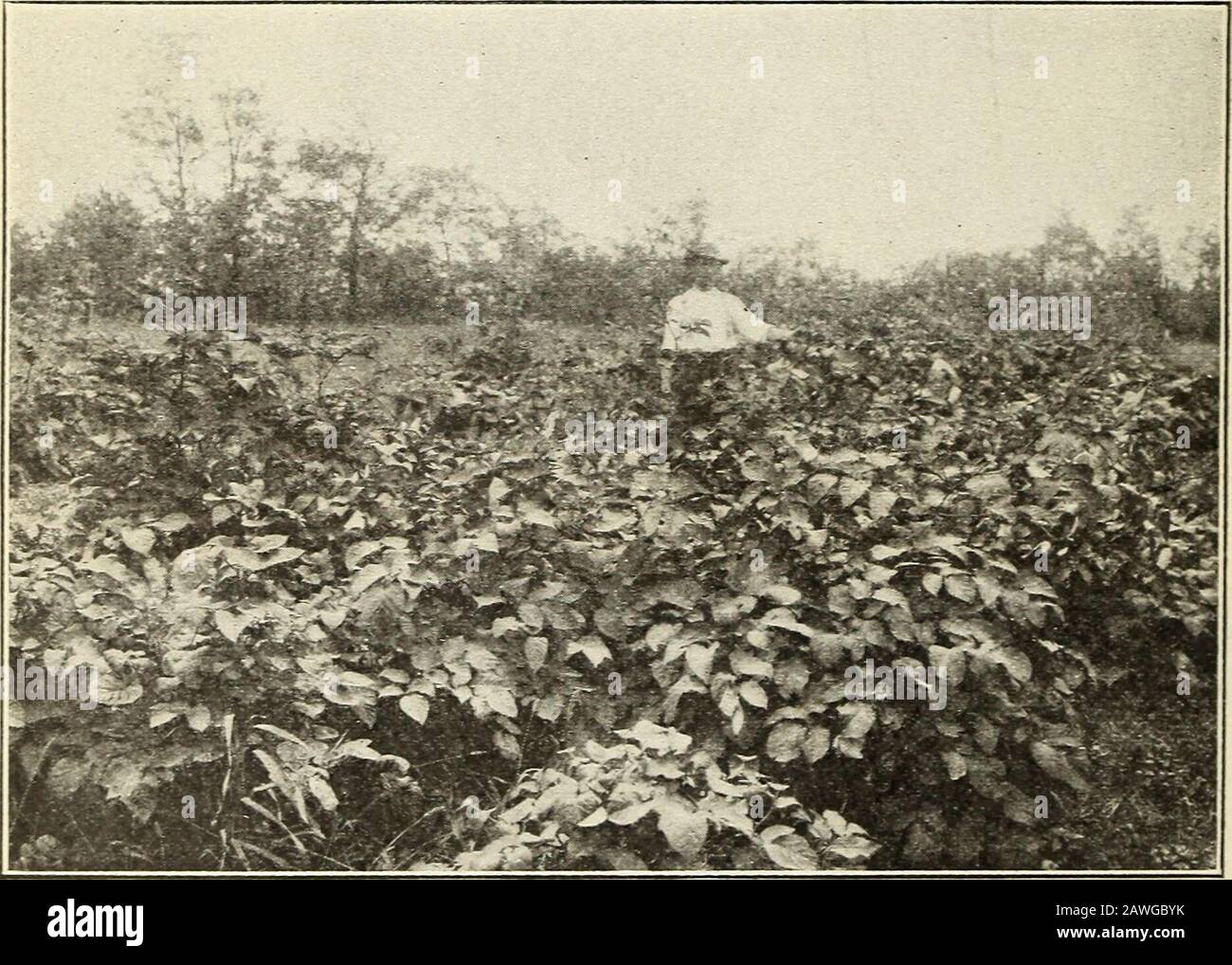Experiments with udo, the new Japanese vegetable . nd many of thetips were green from exposure to sunlight above the mounds. Though slightly dis-colored, these were of good quality when prepared for the table. 4 BULLETIN 84, U. S. DEPARTMENT OF AGRICULTURE. There is no doubt that the uclo is worthy of adding to our list ofspring vegetables, for it is easily grown, its shoots are readilyblanched, and it requires little care. A patch of it can be forcedevery spring for at least six years, and probably much longer. TVhenproperly prepared its blanched shoots are delicious; they have theirown chara

Image details
Contributor:
The Reading Room / Alamy Stock PhotoImage ID:
2AWGBYKFile size:
7.2 MB (485.8 KB Compressed download)Releases:
Model - no | Property - noDo I need a release?Dimensions:
1871 x 1336 px | 31.7 x 22.6 cm | 12.5 x 8.9 inches | 150dpiMore information:
This image is a public domain image, which means either that copyright has expired in the image or the copyright holder has waived their copyright. Alamy charges you a fee for access to the high resolution copy of the image.
This image could have imperfections as it’s either historical or reportage.
Experiments with udo, the new Japanese vegetable . nd many of thetips were green from exposure to sunlight above the mounds. Though slightly dis-colored, these were of good quality when prepared for the table. 4 BULLETIN 84, U. S. DEPARTMENT OF AGRICULTURE. There is no doubt that the uclo is worthy of adding to our list ofspring vegetables, for it is easily grown, its shoots are readilyblanched, and it requires little care. A patch of it can be forcedevery spring for at least six years, and probably much longer. TVhenproperly prepared its blanched shoots are delicious; they have theirown characteristic flavor, can be prepared for the table in a greatvariety of ways, and are keenly appreciated by people of discriminat-ing taste. Space for space, udo will yield about the same amount offood for the table as asparagus and will be ready for use at aboutthe same time in the spring. Possibly more labor is required toblanch the shoots of the udo than those of asparagus, but the udo isprobably somewhat easier to take care of and yields sooner.. Fig. o. -Plantation of udo one season from seed at the Arlington (Va.) Field Station.1905. As an ornamental, udo has been known to nurserymen for twentyyears or more under the name of Alalia cor data Thunb. It mightbe termed a rank-growing, shrubby perennial with a large, fleshyrootstock (fig. 5). It dies down each fall after the first frost andcomes up again, much as asparagus and rhubarb do. It grows to aheight of 10 feet or more if on rich soil, producing a very ornamentalmass of large green leaves, and, in the late summer, long, looseflower clusters, sometimes 3 feet in length. The flowers attract beesand flies in great numbers, and as a honey plant the udo would appearto warrant the attention of beekeepers (fig. G). A field of udo isgenerally humming with insects. EXPERIMENTS WITH UDO. EARLY EXPERIMENTS WITH UDO. Siebold and Zuccarini, 1 in their Flora of Japan, called specialattention as long ago as 1835 to the good qualities of